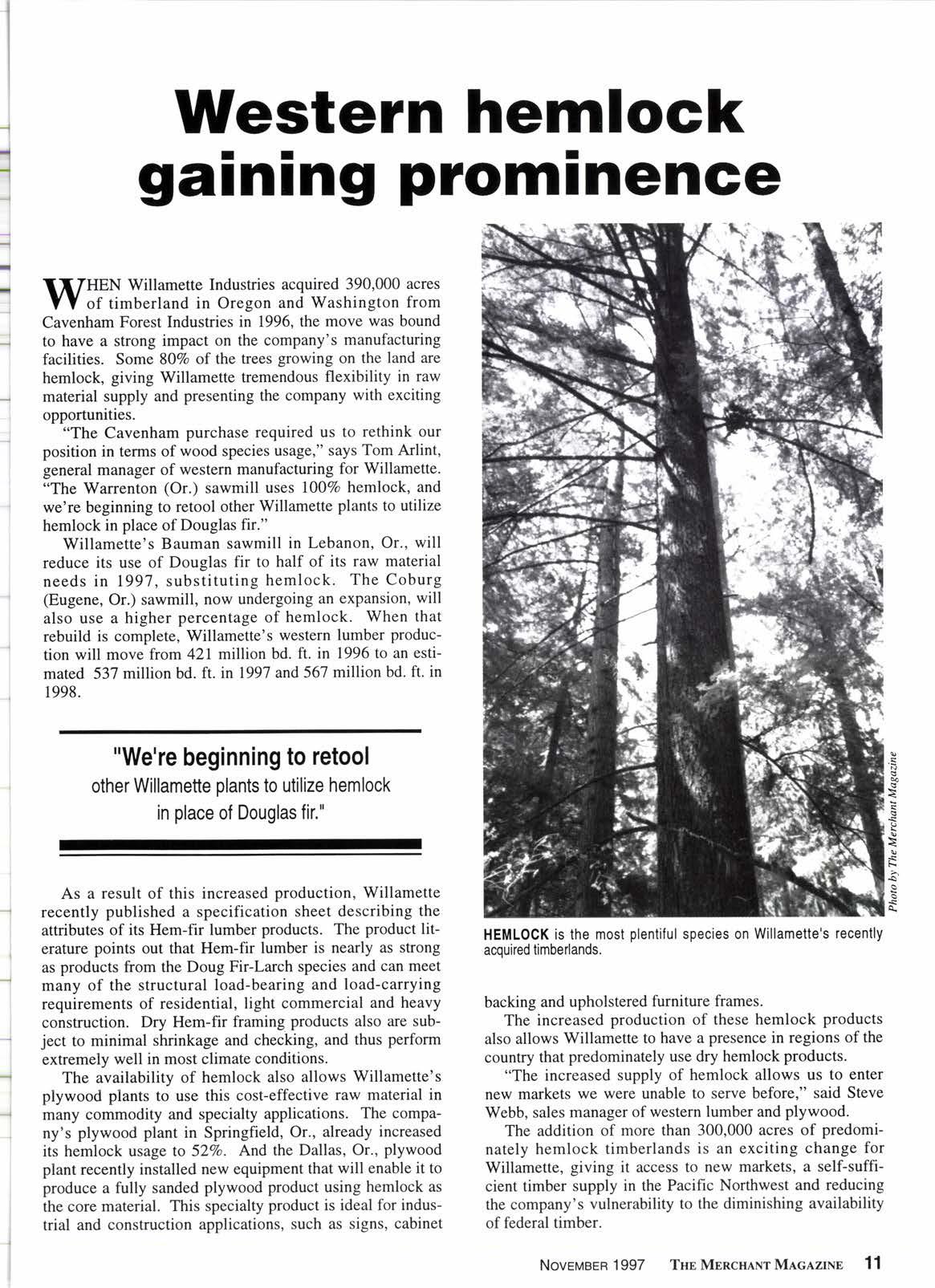
1 minute read
Western hemlock garnrng promlnence
IIEN Willamette Industries acquired 390,000 acres of timberland in Oregon and Washington from Cavenham Forest Industries in 1996, the move was bound to have a strong impact on the company's manufacturing facilities. Some 80% of the trees growing on the land are hemlock, giving Willamette tremendous flexibility in raw material supply and presenting the company with exciting opportunities.
"The Cavenham purchase required us to rethink our position in terms of wood species usage," says Tom Arlint, general manager of western manufacturing for Willamette. "The Warrenton (Or.) sawmill uses 1007o hemlock, and we're beginning to retool other Willamette plants to utilize hemlock in place of Douglas fir."
Willamette's Bauman sawmill in Lebanon, Or., will reduce its use of Douglas fir to half of its raw material needs in 1997, substituting hemlock. The Coburg (Eugene, Or.) sawmill, now undergoing an expansion, will also use a higher percentage of hemlock. When that rebuild is complete, Willamette's western lumber production will move from 421 million bd. ft. in 1996 to an estimated 537 million bd. ft. in 1997 and 567 million bd. ft. in 1998.
"We're beginning to retool
other Willamette plants to utilize hemlock in place of Douglas fir."
As a result of this increased production, Willamette recently published a specification sheet describing the attributes of its Hem-fir lumber products. The product literature points out that Hem-fir lumber is nearly as strong as products from the Doug Fir-Larch species and can meet many of the structural load-bearing and load-carrying requirements of residential, light commercial and heavy construction. Dry Hem-fir framing products also are subject to minimal shrinkage and checking, and thus perform extremely well in most climate conditions.
The availability of hemlock also allows Willamette's plywood plants to use this cost-effective raw material in many cornmodity and specialty applications. The company's plywood plant in Springfield, Or., already increased its hemlock usage to 52Vo. And the Dallas, Or., plywood plant recently installed new equipment that will enable it to produce a fully sanded plywood product using hemlock as the core material. This specialty product is ideal for industrial and construction applications, such as signs, cabinet backing and upholstered furniture frames.
HEMLOCK is the most plentiful species on Willamette's recently acquired timberlands.
The increased production of these hemlock products also allows Willamette to have a presence in regions of the country that predominately use dry hemlock products.
"The increased supply of hemlock allows us to enter new markets we were unable to serve before," said Steve Webb, sales manager of western lumber and plywood.
The addition of more than 300,000 acres of predominately hemlock timberlands is an exciting change for Willamette, giving it access to new markets, a self-sufficient timber supply in the Pacific Northwest and reducing the company's vulnerability to the diminishing availability of federal timber.










